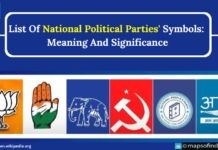ONGC – An Overview
Oil and Natural Gas Corporation Limited (ONGC) was founded by the Government of India on 14th August 1956. ONGC is an Indian multinational oil and natural gas company, headquartered in Dehradun and is currently one of the largest oil and natural gas exploration companies in Asia. Keeping in mind that crude oil is on the top of the import bill of India, ONGC is responsible for meeting almost 30% of the country’s demand for crude oil and 48% of the country’s natural gas requirements.
ONGC Videsh Limited (OVL), a subsidiary completely owned by ONGC is vested with the responsibility of prospecting and exploring hydrocarbon resources abroad. Currently, OVL is involved in projects in 15 countries. As per 31st March, 2013 data, OVL achieved an authorized and paid up share capital amounting to Rs 5,000 crore.
ONGC in Action
The basic responsibility of ONGC is prospecting for natural hydrocarbon resources, exploring them and tapping the potential reserves of hydrocarbon into commercially viable energy sources. The achievements of ONGC in the last five decades is extremely appreciable, as evident from the fact that 6 out of the 7 Indian Basins producing commercially viable fuel has been discovered by ONGC. The Company is involved in exploring and tapping the hydrocarbon resources of the 26 sedimentary basins and the relentless efforts of ONGC has resulted in the addition of 7.1 billion tons of ‘In-place Oil and Gas’ volumes in the last five decades.
A current possessor of 69.23% equity stake, ONGC also has 11,000 kilometers of pipelines under its sleeve in India. During global oil supply dry up periods ONGC has invested exhaustively in various ‘Improved Oil Recovery (IOR)’ and ‘Enhanced Oil Recovery (EOR)’ programs (enhancing the ‘Recovery Factor’ to 33.5% in 2011) in addition to supply from its various ‘brownfields’ namely Mumbai High. The continuous efforts of ONGC have considerably helped to maintain a greater than one ‘Reserve Replenishment Ratio’.
ONGC has always been proactive in trying to meet the ever increasing domestic requirements of fuel. The final agreement of securing a 10% stake in the strategically located offshore gas fields in Mozambique by paying US based Andarko Petroleum $6.2 billion as a price for the 10% stake is just another example and the second such deal to be finalized by ONGC in the recent months. According to Sudhir Vasudeva, Chairman, OVL, “Mozambique gas field has the potential to become one of the world’s largest LNG projects”.
So far ONGC’s biggest official overseas acquisition had been with ConocoPhillips. The deal involved in securing an 8.4% stake in the Kashagan project of Kazakhstan for US$ 5 billion in 2012. But sadly enough, the deal fell through because the Kazakhstan Government blocked the agreement and resold the stake to a Chinese firm. OVL has lost at least US$ 12.5 billion worth of deals to the Chinese and the current complications created by the Chinese firm Sinopec at the Brazilian oil fields is forcing ONGC to mull over exercising its preemption rights to block Sinochem group of China from buying a 35% stake in the Brazilian oilfields for US$ 1.54 billion. Another important foreign acquisition of ONGC in collaboration with OIL India was to buy a 10% stake from the Videocon Group in the Rovuma Area 1 field in Mozambique for US$ 2.48 billion.
So far the state run Bharat Heavy Electricals Limited (BHEL) had been involved in revamping and maintaining the 33 existing onshore drilling rigs of ONGC and is also involved in servicing and upgrading seven more rigs of ONGC which are on the verge of completion. However, BHEL is going to play a more important role in the oil drilling infrastructure after the finalization of the Rs 774 crore contract with ONGC to manufacture and supply six extremely high technology onshore oil drilling rigs to ONGC. These state of the art, 2000 HP, onshore drilling rigs with AC drives will be assembled in two phases. The Hyderabad plant of BHEL will handle the manufacture of the mechanical parts while the Bhopal plant will deal with the manufacture of the electrical components. As per a press release from BHEL, BHEL has a dedicated group of experts for manufacturing, refurbishment, and up-gradation of onshore drilling rigs and rig equipment along with adequate facilities. It is to be mentioned that BHEL is the only company in our country that manufactures onshore drilling rigs, having manufactured 71 rigs for ONGC and 13 for Oil India Limited (OIL) in the past.
In an effort to lower the infrastructural cost involved in explorations and further enhancement of field development, ONGC is planning to share the infrastructure of the Reliance Industries Limited (RIL) on the East Coast. Following this decision ONGC has signed an initial agreement with RIL. According to a statement released on behalf of RIL, “The memorandum of understanding (MoU) aims at working out the modalities for sharing of infrastructure, identifying additional requirements as well as firming up the commercial terms. The infrastructure sharing would help in early monetization of its deep water fields adjacent to the fields of RIL. The companies intend to enter into a formal agreement after conducting a joint study which will be spread over the next nine months”. The first phase of ONGC’s plans involves production of gas (6 to 9 standard cubic million per day) from the G-4, KG-DWN- D & E fields.
A Crude Oil Sale Agreement (COSA) has been signed between ONGC and one of its subsidiaries, Mangalore Refinery and Petrochemicals Limited (MRPL) for the first time, ensuring a supply of crude oil from the JNTP/JD and offshore rig over a period of five years. The quantity of crude oil to be supplied over the period of five years is estimated to be worth Rs 38,500 crore given the fact that ONGC already supplies about 12% of MRPL’s crude oil requirement. This COSA completes ONGC’s deals with all the major domestic buyers of crude oil including BPCL, HPCL, IOCL and CPCL all of whom have signed COSA’s with ONGC.
In an effort to increase funding in ONGC’s explorations, the Cabinet has decided to double the natural gas prices from US$ 4.20 to US$ 8.4 per million British thermal unit. The logic behind the price hike is that domestic explorations in the long run will ultimately reduce the hefty import bill of crude oil for India.
As our country’s economy continues to grow, the fuel requirement is also growing almost proportionally. We should be thankful that organizations like ONGC are trying to acquire overseas assets to ensure a consistent supply to reduce the hefty crude oil import bill of Asia’s third largest economy.




